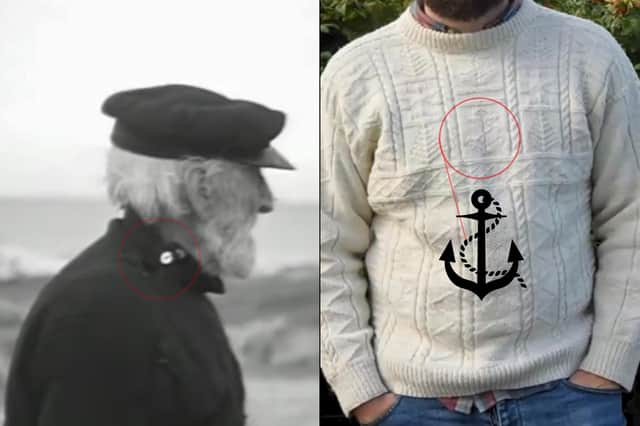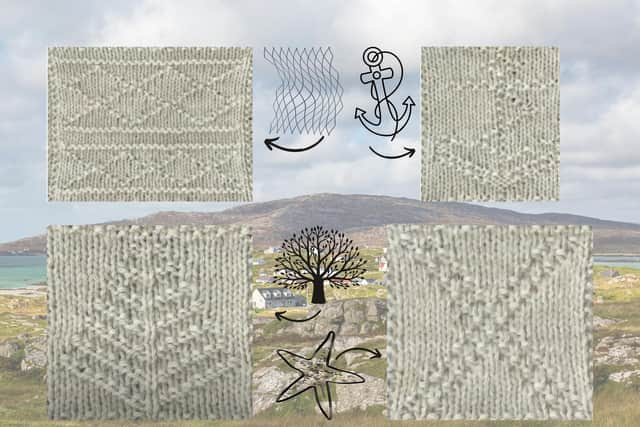Eriskay Ganseys: Traditional Scottish jerseys with hand-woven symbols unique to wearers


In the beautiful Outer Hebrides of Scotland, resting between South Uist and Barra, you can find the remote island of Eriskay which stretches out three miles in length to accommodate a population of under 200 people. While the island may appear small in stature it has made a huge contribution to Scottish heritage with the Eriskay Gansey; an old knitting tradition of the Gaelic community.
Garments that serve identification purposes are nothing new in Scotland (look no further than tartans that represent one’s clan) but these woollen wares were not only useful for the fishermen they were knitted for as workwear but also as a means of identifying them by way of the uniquely knitted patterns.
Advertisement
Hide AdAdvertisement
Hide AdHere’s an overview of this captivating - and aesthetically pleasing - Hebridean tradition including why these jerseys were of such great significance to the local community.
What is the Eriskay Gansey?
According to the Visit Outer Hebrides website: “Eriskay Jerseys are traditional jerseys which were knitted by the women of Eriskay for their fishermen husbands.” It is said that most Scottish fishermen owned at least one of these iconic garments from the late 19th century which were often dark blue.
The jerseys were created by the fishermen’s families who knitted them tightly with water-resistant wool so they were both comfortable and practical for surviving the intense outdoor work of fishing. They also had aesthetically distinctive patterns and symbols which served other vital roles for these fishing communities.
Today, the Scottish Fisheries Museum has over fifty hand-knitted ganseys in their collection.


Why was the Eriskay Gansey important?
The jerseys were expertly crafted with seamless knitting to not only keep fishermen warm but also keep out the damp. They were also high-necked with buttons to secure them so they fit comfortably around the wearers’ necks and offered greater protection from the unforgiving Scottish weather crashing into the sailors’ skin.
The sturdy craftsmanship also made it easier to pull wearers out of the water if they fell overboard. The most iconic motif of Eriskay Ganseys, their uniquely intricate patterns, also served an important purpose as individual patterns were woven for every fisherman and this was used to identify that man if he was lost at sea.
Like an ID badge or uniform, the body of anyone who drowned at sea could be easily identified thanks to this garment; a sobering reminder of the harsh conditions these men braved for their families.
To this day the Isle of Eriskay is home to the shipwrecked S.S. Politician, the site serves as a stark reminder of how dangerous the maritime profession is.


How many Eriskay Gansey designs are there?
Advertisement
Hide AdAdvertisement
Hide AdBefore being catalogued by folk historians, gansey designs (like Scottish mythology) were not recorded in writing but shared through word of mouth between the families that knitted them.
The Scottish Gansey Organisation said that “the patterning on ganseys was used to reflect a fisherman’s daily life.
“For this reason, patterns were generally named after items found at sea, such as ‘net’, ‘herring bone’ and ‘anchor’, amongst others.
“Similarly, some patterns echoed key characteristics of the sea and the weather, whilst other motifs (e.g., the ‘marriage lines’ zigzagged design, symbolising the ups and downs of married life) bore more complex symbolic meanings.”
Individual villages and families were said to have their own distinctive designs too as a way of representing the wearer’s heritage. Specific symbols like the ‘tree of life’ (which represents the afterlife) are also commonly found on the Ganseys.
Comments
Want to join the conversation? Please or to comment on this article.
